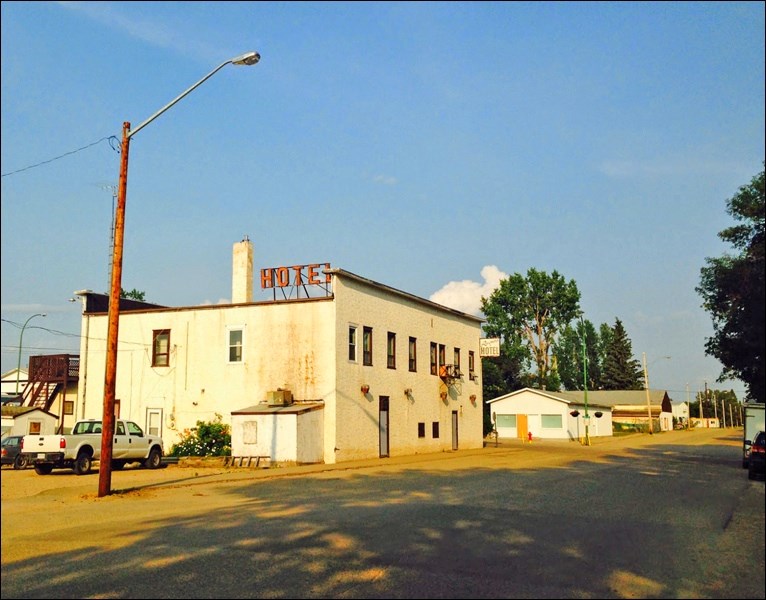On an April day in 1908, Archibald G. MacLean set out on a long walk. MacLean had arrived from Prince Edward Island a few years earlier and was working as a clerk in the Govan general store. Ambitious, he wanted more. When he heard the Grand Trunk Railway line was being built from Melville to Saskatoon, he walked 46 kilometres from Govan to the site chosen by the GTR for the town to be called Raymore. MacLean acquired several lots and set up business in a tent. By 1908, he had built a general store, and by 1911, he had constructed a three-storey hotel. MacLean also served as Raymore’s first postmaster, a position he held until 1950 when he retired.
By 1916, according to the Canada census, William “Bill” Baker, age 55, and his wife Ida, age 48, were the owners of the Raymore Hotel. The Bakers ran the hotel with the help of two Chinese cooks, a waitress and a porter. Dances and fancy-dress parades were held in the hotel, presided over by Bill Baker, smoking an ever-present cigar.
When Prohibition hit, the Bakers quit the hotel business, selling the hotel to Mah Yuen and Ping Sam. The Chinese owners ran the hotel throughout the 1920s and into the 1930s. They sold soft drinks and ice cream, and featured the Raymore Moving Picture Show in the hotel every Friday and Saturday nights.
In 1935, the year the provincial government allowed the sale of beer by the glass in hotel bars, Mah Yuen and Ping Sam were unable to obtain a license to open a beer parlour at the Raymore Hotel. Chinese people were excluded because the law required that an applicant for a liquor license had to be a person who was entitled to vote. The Chinese in Saskatchewan did not receive the provincial franchise until 1947.
The Raymore Hotel was taken over by John “Jack” and Vivian “Vi” Morrow, formerly of Yorkton. “Raymore welcomes the new manager at the same time that they regret the departure of the genial Chinese gentlemen who for 16 years have been consistently good citizens of the village,” the newspaper reported.
Jack was born in North Dakota in 1890 and came to Saskatchewan in 1908. In 1925, Jack met Violet (Vi) Jane Roe in Regina, where she worked as the manageress of the Hotel Saskatchewan coffee shop. They married in 1928. After her husband Jack died in 1957, Vi continued to operate the Raymore Hotel with the help of her son, Bob. Prior to her retirement in 1967, Vi was awarded a life membership in the Hotels Association of Saskatchewan. She was the second woman to have spent 50 years in the hotel business.
With the outbreak of the Second World War in 1939, the Morrows faced a new challenge at the Raymore Hotel. So many people left to join the war effort that it became impossible to find employees. Jack became the bartender and Vi became the cook. Their two oldest children, Jack Jr. and Imelda, were enlisted to wait on tables, make beds, do the laundry twice a week, and myriad other chores. The youngest Morrow child, Bobby, had to stand on soft drink cases and wash dishes in the hotel kitchen. The family still managed to hold regular Saturday night dances at the hotel throughout the war years. These dances came to an end following the war, when the beer parlour was expanded due to an increase in business.
In 1956, fire broke out in the Raymore Hotel. Fourteen guests in the 33-room hotel had to be evacuated when flames were discovered at 9 o’clock in the morning. Some guests lost their belongings, but fortunately no one was injured. The Raymore Volunteer Fire Department managed to extinguish the blaze, but the third floor of the hotel had to be removed from the building as a result of the fire.
(Source: From Prairie Wool to Golden Grain: Raymore and District, 1904-1979.)
��




